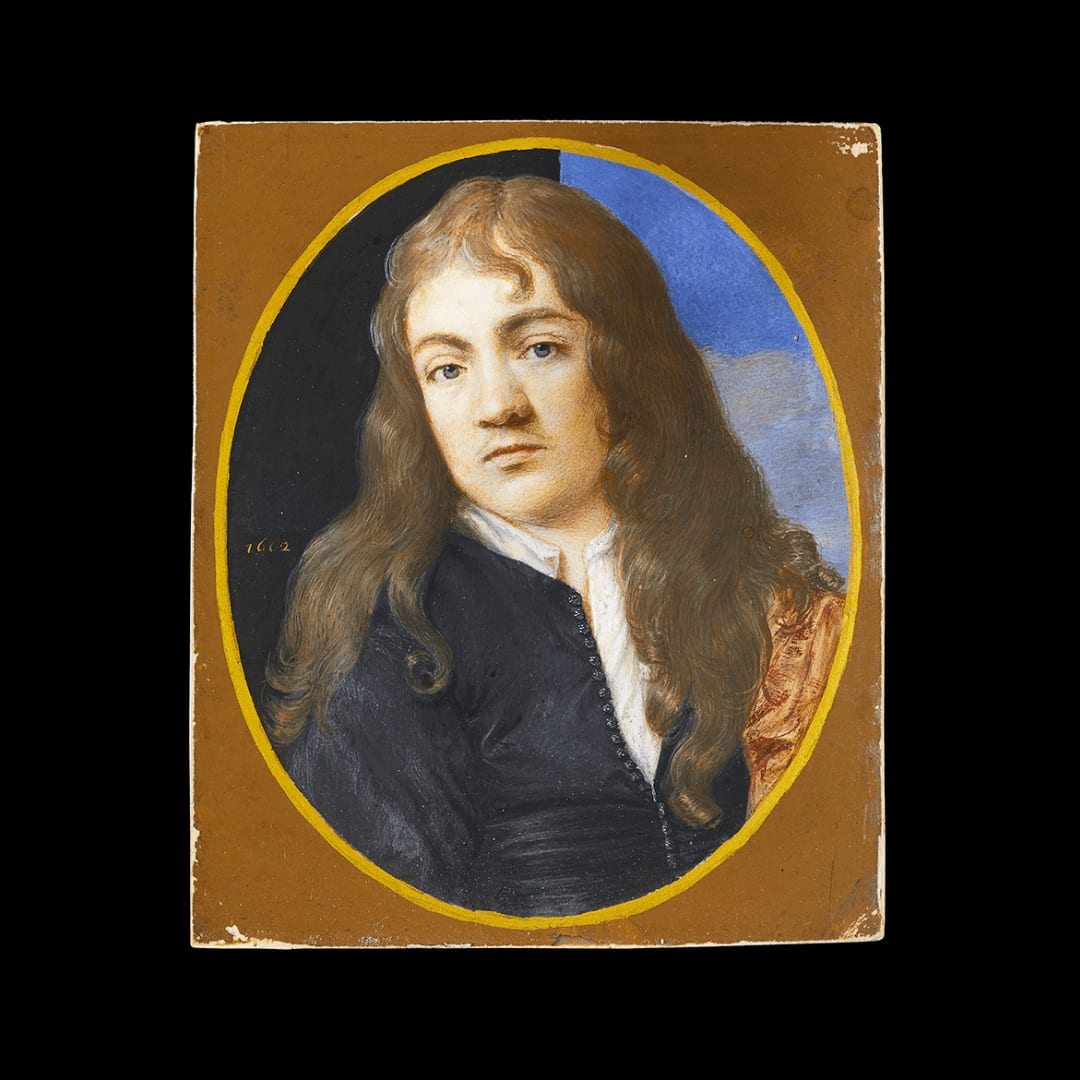This self-portrait by the artist and poet Thomas Flatman is one of his earliest portrait miniatures and his first self-portrait. Flatman was among Beale’s closest friends and played a crucial role in the development of her early professional practice.
Once Beale had established her professional studio, the social and artistic exchange between Flatman and Beale contributed to the success of both artists’ respective practices. Beale’s son Charles began taking lessons with Flatman, as recorded by her husband, Charles Beale, in March 1677: ‘I sent my son Charles to Mr Flatmans in order to him beginning to learn to limne of him.’[1] Charles the Younger was clearly talented, and by October of the same year his father ‘pd for a desk for limning for my son Charles’.[2] As a dedicated assistant in his mother’s studio, Charles undoubtedly benefitted from the skills he acquired under Flatman’s guidance. The influence of Flatman is particularly evident in Charles Beale’s miniatures, including his portrait of...
This self-portrait by the artist and poet Thomas Flatman is one of his earliest portrait miniatures and his first self-portrait. Flatman was among Beale’s closest friends and played a crucial role in the development of her early professional practice.
Once Beale had established her professional studio, the social and artistic exchange between Flatman and Beale contributed to the success of both artists’ respective practices. Beale’s son Charles began taking lessons with Flatman, as recorded by her husband, Charles Beale, in March 1677: ‘I sent my son Charles to Mr Flatmans in order to him beginning to learn to limne of him.’[1] Charles the Younger was clearly talented, and by October of the same year his father ‘pd for a desk for limning for my son Charles’.[2] As a dedicated assistant in his mother’s studio, Charles undoubtedly benefitted from the skills he acquired under Flatman’s guidance. The influence of Flatman is particularly evident in Charles Beale’s miniatures, including his portrait of Edward Stillingfleet (1635–1699), featured in this exhibition.
Flatman and Beale owned portraits by each other, which they probably displayed in their respective homes and studios. Notably, in the same year in which this self-portrait was made, Flatman completed portraits for several members of the Beale family. This exchange of artwork exemplifies a strategic yet friendly partnership, in which each artist benefitted from the other’s clientele, enhancing their respective social and professional networks.
[1] Beale, ‘Notebook 1676/7’.
[2] Beale, ‘Notebook 1676/7’.


